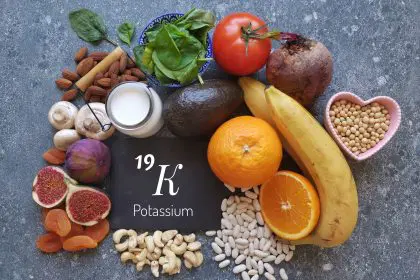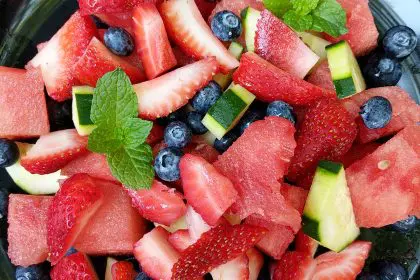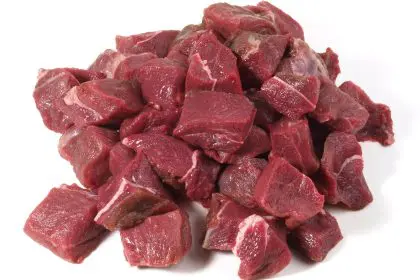These plant-based calcium powerhouses might surprise even the most dedicated milk drinkers
The dairy myth we’ve all believed
For decades, milk has held the crown as the calcium king in our diets. Television commercials, school nutrition programs, and family dinner tables have all reinforced this calcium connection. Yet nature offers numerous plant-based alternatives that not only match but sometimes exceed milk’s calcium content while delivering additional health benefits.
The standard glass of milk contains approximately 300mg of calcium per cup—about 30% of your daily requirement. However, several vegetables deliver impressive amounts of this bone-strengthening mineral without the saturated fat or lactose issues some people experience with dairy products.
Beyond calcium, these vegetable options pack a nutritional punch with antioxidants, fiber, and various vitamins that milk simply cannot provide. This makes them excellent choices for anyone looking to diversify their nutrient intake, particularly those following plant-based diets.
Why calcium matters more than you think
Calcium does far more than build strong bones and teeth. This essential mineral plays crucial roles throughout the body, including nerve transmission, muscle function, blood vessel contraction, and hormone secretion. Adequate calcium intake may also help manage blood pressure and potentially reduce the risk of certain cancers.
Despite its importance, many Americans fall short of recommended calcium intake levels. The average adult needs between 1,000-1,200mg daily, yet studies show many people consume only half that amount. This calcium deficit can contribute to decreased bone density and increased fracture risk as we age.
What makes vegetable sources particularly valuable is their bioavailability—how effectively the body can absorb and utilize the calcium they contain. While milk calcium has good bioavailability, certain plant compounds can enhance or inhibit absorption, making some vegetables surprisingly efficient calcium sources.
Collard greens: The unexpected calcium champion
When ranking calcium-rich vegetables, collard greens claim the top position with an astonishing 357mg of calcium per cup when cooked. That’s more calcium than a glass of milk, making this southern favorite a bone health superstar.
These leafy greens belong to the same family as kale and broccoli but offer distinct advantages. Beyond calcium, collards deliver vitamin K, which works synergistically with calcium to strengthen bone structure. Their rich fiber content supports digestive health, while their antioxidant properties help combat cellular damage.
Traditional preparation methods often involve slow-cooking collards with smoked meats, but healthier preparations maintain more nutrients. Quick-sautéing with olive oil and garlic or incorporating them into soups preserves more minerals while reducing sodium content.
For those unaccustomed to collard greens, their slightly bitter flavor mellows with proper cooking. The tender leaves become silky when cooked, offering a satisfying texture that absorbs other flavors beautifully. This adaptability makes collards an excellent addition to various dishes beyond their traditional southern preparations.
Kale: The trendy nutritional powerhouse
Kale has enjoyed celebrity status in the nutrition world, and its calcium content helps explain why. This cruciferous vegetable provides approximately 139mg of calcium per 100g serving, nearly half of what milk offers but with significantly fewer calories.
What makes kale particularly valuable is its nutrient density. Beyond calcium, it delivers exceptional amounts of vitamins A, C, and K, along with manganese and powerful antioxidants like quercetin and kaempferol. These compounds help reduce inflammation and oxidative stress, potentially lowering disease risk.
The versatility of kale enhances its appeal. Raw kale works wonderfully in salads after a gentle massage with olive oil to break down its tough fibers. When blended into smoothies, its earthy flavor disappears amid sweeter ingredients. Baked kale chips offer a nutrient-dense alternative to traditional snacks, while sautéed kale makes an excellent side dish or addition to pasta and grain bowls.
For those who find kale’s flavor too assertive, baby kale offers a milder entry point. These younger leaves maintain the same nutrient profile but with a gentler taste and more tender texture, making them ideal for salads and wraps.
Kelp: The sea vegetable with surprising benefits
Venturing beyond land-based options, kelp delivers approximately 136mg of calcium per cup, making this sea vegetable a noteworthy calcium source. As an edible seaweed, kelp has been a staple in Asian cuisines for centuries but remains underutilized in Western diets.
Kelp’s mineral content extends well beyond calcium. It offers one of the richest natural sources of iodine, essential for thyroid function and metabolic regulation. Its high magnesium content works alongside calcium to support muscle and nerve function, while its iron content benefits oxygen transport throughout the body.
For those new to kelp, its distinctive ocean flavor and chewy texture might require adjustment. Dried kelp rehydrates quickly and adds depth to soups and broths. Kelp noodles offer a low-calorie, gluten-free pasta alternative. For those hesitant about cooking with kelp, supplements provide concentrated nutrients without culinary challenges.
The environmental benefits of kelp add another dimension to its appeal. Kelp forests absorb carbon dioxide, reduce ocean acidification, and provide crucial marine habitats. Harvesting kelp typically has minimal environmental impact, making it a sustainable food choice aligned with planetary health.
Soybeans: The versatile protein and calcium package
Soybeans stand out among calcium-rich vegetables with approximately 175mg per cup. This legume crosses categories as both a protein and calcium powerhouse, making it particularly valuable for plant-based diets.
Beyond calcium, soybeans offer complete protein containing all essential amino acids—rare among plant foods. Their iron, magnesium, and B-vitamin content supports energy production and overall metabolism. Isoflavones, plant compounds found in soybeans, may offer additional health benefits, particularly for cardiovascular and bone health.
The versatility of soybeans extends through various forms: edamame (young soybeans), tofu, tempeh, and soy milk all retain calcium content while offering different textures and culinary applications. Edamame makes an excellent snack or salad addition, while firm tofu works well in stir-fries and grilled dishes. Tempeh’s nutty flavor enhances sandwiches and bowls, while soy milk serves as a direct milk replacement in beverages and recipes.
When selecting soybean products, organic options help avoid genetically modified varieties that dominate conventional soy production. Fermented soy foods like tempeh and miso offer additional benefits through enhanced digestibility and probiotic content.
Broccoli: The familiar favorite with hidden benefits
Broccoli delivers approximately 74mg of calcium per cup, making this familiar vegetable a notable calcium contributor. While this amount might seem modest compared to collards or kale, broccoli’s exceptional bioavailability means the body absorbs a higher percentage of its calcium—up to 61% compared to about 32% from milk.
This green vegetable earns its superfood status through its comprehensive nutrient profile. A single cup provides more than 100% of daily vitamin C needs, supporting immune function and collagen production. Its rich vitamin K content works synergistically with calcium for bone health, while its fiber content supports digestive wellness and satiety.
Broccoli’s cancer-fighting compounds, particularly sulforaphane, have generated significant research interest. This powerful antioxidant stimulates detoxification enzymes and may help prevent certain cancers through multiple mechanisms. Maximizing these benefits relies on proper preparation—light steaming preserves more nutrients than boiling, while adding a small amount of oil enhances absorption of fat-soluble vitamins.
For those who find broccoli’s flavor challenging, roasting transforms its taste profile, caramelizing natural sugars for a sweeter, nuttier flavor. Broccoli stems, often discarded, contain the same nutrients as florets and can be peeled and sliced for stir-fries or shredded into slaws.
Spinach: The versatile green with benefits and limitations
Spinach provides approximately 56mg of calcium per cup, rounding out our list of calcium-rich vegetables. While this amount seems modest, spinach offers numerous other nutrients that support overall health, including high levels of vitamins A, C, K, and folate, along with iron and antioxidants.
The calcium story with spinach comes with an important caveat—its high oxalate content inhibits calcium absorption. While spinach contains significant calcium, the body absorbs only about 5% of it, compared to roughly 30% from milk. This doesn’t diminish spinach’s overall nutritional value but means it shouldn’t be relied upon as a primary calcium source.
Despite this limitation, spinach remains a nutritional standout for other reasons. Its vitamin K content ranks among the highest of any food, supporting bone health through different mechanisms than calcium. Its nitrate content may improve exercise performance and blood pressure regulation, while its antioxidants, particularly lutein and zeaxanthin, support eye health.
Few vegetables match spinach’s versatility in the kitchen. Raw spinach adds mild flavor and nutrients to salads and smoothies. When cooked, its volume reduces dramatically, making it easy to incorporate significant amounts into pasta dishes, omelets, and soups. Baby spinach offers milder flavor and requires no stem removal, making it particularly convenient for everyday use.
Building a calcium-rich diet beyond dairy
Creating a calcium-rich diet involves more than simply replacing milk with vegetables. The most effective approach combines multiple calcium sources to reach daily targets of 1,000-1,200mg. This diversity also ensures you receive the unique secondary nutrients each food provides.
Calcium absorption requires several supporting nutrients, particularly vitamin D. Without adequate vitamin D from sunlight or supplements, even calcium-rich diets may fall short in building bone density. Magnesium, vitamin K, and appropriate protein intake also play essential roles in calcium utilization and bone formation.
Meal planning with calcium in mind creates delicious possibilities. A breakfast smoothie with kale, soybeans in lunch bowls, broccoli as a dinner side, and collard greens in soups can distribute calcium throughout the day. Combining these vegetables with small amounts of dairy or fortified plant milks creates complementary calcium sources with different absorption rates.
Understanding your individual calcium needs matters, too. Athletes, pregnant women, adolescents, and older adults typically require more calcium than average adults. Medical conditions and certain medications can also affect calcium requirements and absorption, making personalized nutrition guidance valuable for those with specific health concerns.
By embracing these vegetable calcium sources, you not only support bone health but also gain phytonutrients, fiber, and vitamins that contribute to overall wellness. This plant-forward approach aligns with contemporary nutrition recommendations emphasizing varied, minimally processed foods as the foundation for long-term health.













